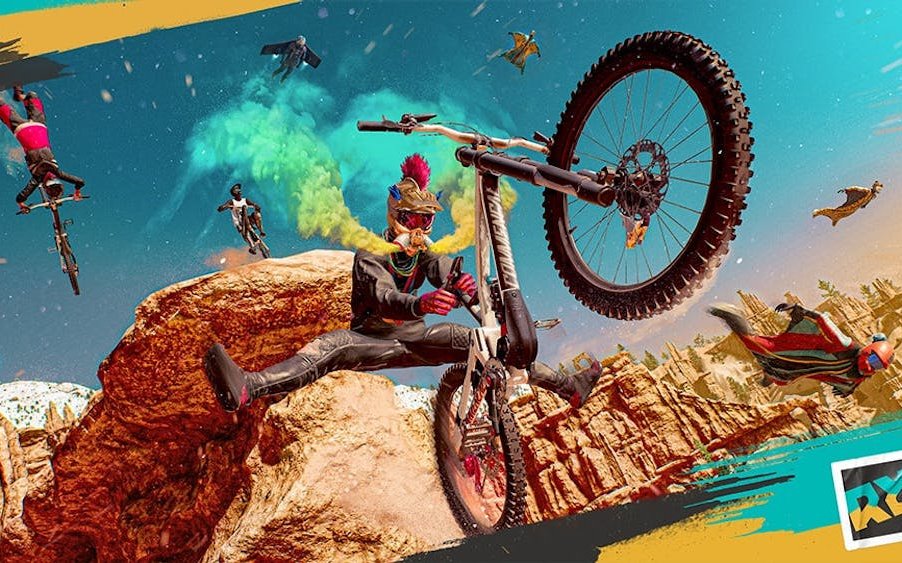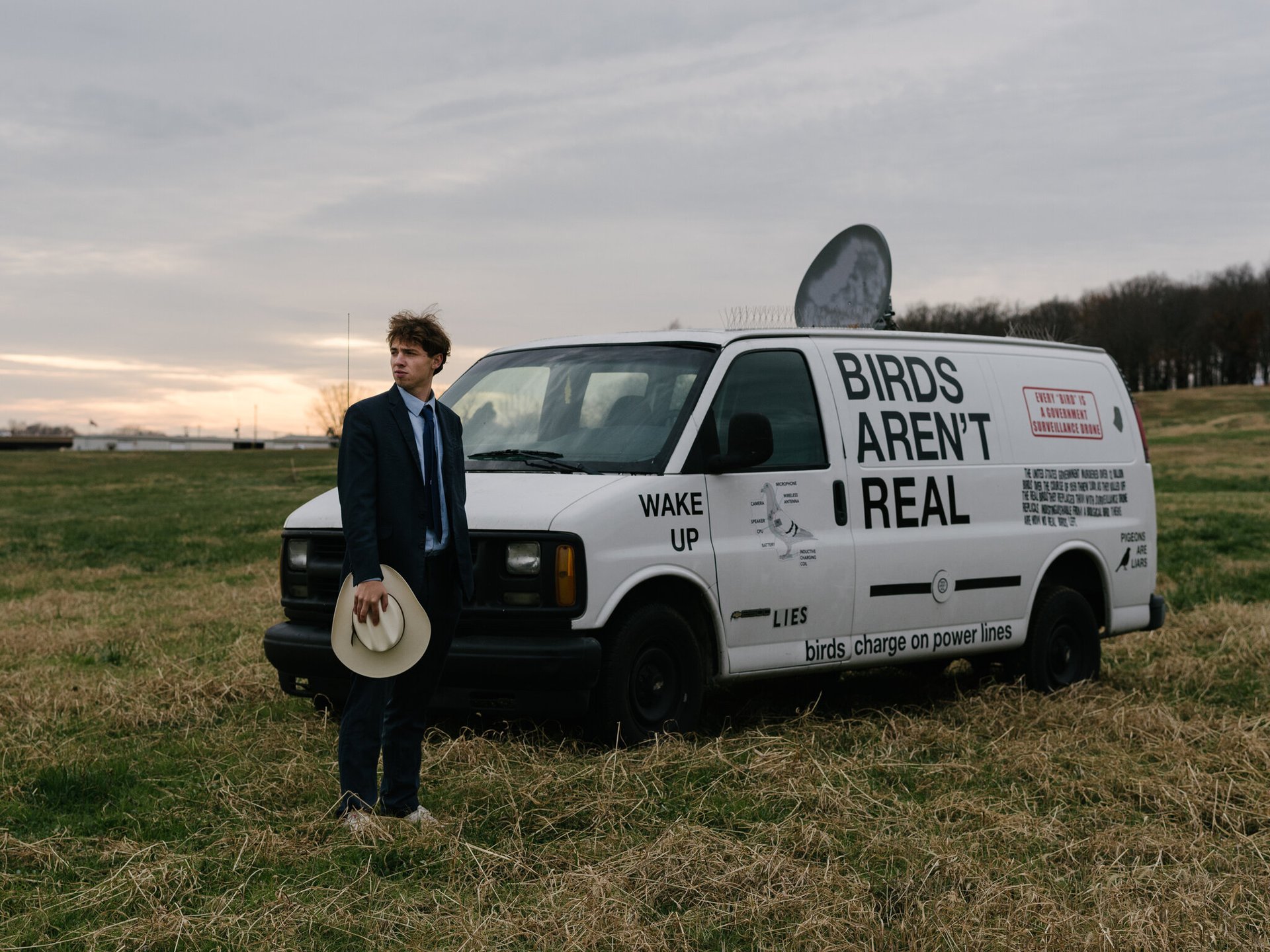
Beggars Would Ride
Shootout At The Fantasy Factory
Last month, the bike industry was roiled with news of dozens of cycling ambassadors and influencers being informed en masse that they were no longer sponsored by the brand that had in some cases been helping them pay the bills for over a decade. Caught up in this cull were bikepackers, packrafters, graveleurs, mountain soul surfers, singletrack sculptors and riders from just about every aspect of cycling that wasn’t defined by race results. Black, brown, yellow, beige, white; male, female, neither, both. The un-endorsement was abrupt and it did not discriminate. This was a cultural punctuation mark; the end of an era that had seen massive inroads made toward gender equity, non-binary acceptance, racial inclusivity, and with actual money put down in pursuit of a broader conversation. A decade spent attempting to buck the notion that cycling is a landscape predominantly populated and controlled by aging white men. It had been a noble and worthy cause.
For many of the athletes affected, it was a brutal gut punch. A way of life, a path within a sport that they cared deeply about, had become suddenly more difficult. For others, it was just busines as usual; a bit more troublesome given the timing right before the holidays, but still, shit happens. Why did shit happen, though? That was what many pundits were left asking.

Okay, it ain't exactly 1929, but the pinch is happening...
The obvious and easy culprit would be the economy. It’s no secret that the massive enthusiast generated spending spree ushered in by the pandemic has lost its head of steam. The writing was on the wall back when that dude in Sex In The City died after a spin on his Peloton bike, immediately nosediving Peloton’s fortunes. Everyone had spent a couple years buying things that helped them work out, helped them play outdoors, helped them think about something other than lockdowns and virulence, and as the masks came off and the bars and football stadiums began to fill back up, the buying surge eased.
We all saw this coming. We all knew that the supply chains – previously flexed to their absolute elastic limits during the pandemic – were flowing with a river of product and that the grim shortages of everything from toilet paper to inner tubes were slowly but surely becoming a thing of the past. The year-plus waiting lists to buy new mountain bikes or Ford Broncos or Creedmoor 6.5 ammo were blinking from “backordered” to “in stock” everywhere. And we all knew, those of us in the bike industry and those of us standing on the sidelines, that we were about to face a surplus of inventory. Excess inventory, reduced consumer demand, even if that demand is reducing to the “normal” of a few short years ago, means one thing: lower prices. Less profit margin. This is basic Keynesian economics; the first thing any kid learns in high school econ class. Even addled old math-class dropouts like me know this song by heart.
But I’m a deeply paranoid individual, and when I’m not worrying about the coming Singularity or whether birds are real, I can’t help but speculate on the possibility that there is something else at work here. If the economics were the root cause, ditching a pile of athletes who were not being paid very much to begin with seems to be chopping off the lowest of the low hanging fruit. It’s not likely to assuage the bottom line impact of however many thousands of surplus forks or shocks or cranksets. Then again, those parts can eventually be discounted and sold, and their cost recovered. So, the profit margin shrinks, but there’s still some profit, just not as much, and money keeps flowing. Keynes again.

I mean, he makes some good points...
If not solely economics, then what? Cue my paranoia. Could this be a sea change in media trends, and could this mean that the wind is no longer so fully in the sails of influencer culture? Admittedly, this is an easy target for some of us to line up. Social media has created narcissists and voyeurs out of us all, to some degree. It is this machine that feasts on our attention, tailors algorithms to keep us watching, and so correctly assumes our habits that it transfixes us to the scroll with an accuracy that is chilling to witness from any distance. And it has been so successful at what it does that brands have eagerly been dumping money down its throat in the hopes of fostering brand awareness, broadcasting the latest cool new things, and propping up the idea that they are fully vested in the hot topics of the past decade; inclusivity, diversity, equity.
If this is a sign that influencer culture may be on the decline, the ghosts of every print magazine that folded up in the wake of brands shifting their ad dollars to paying for “influencer content” will be lining up to dance on that fresh grave. At what point can we say we’ve seen enough of what the Kardashians are wearing? Do we really care who Jake or Logan Paul is going to fight next? Why are we so mesmerized by shit that just does. not. matter?
And therein lies the rub, at least for this jaded old treeware refugee. Influencer culture has at its heart a vain and corroded soul, and when it comes to balancing the convenience and speed of infotainment with the degradation in our collective ability to think, to reason, to do much beyond stare transfixed at our small glowing screens, I cannot bring myself to see it as a net positive for humankind. At the same time, I was on deck during the hiring of some of these influencers a decade ago, and I count many friends among the fallen. And I honestly believe that the push for a broader conversation - especially with regard to mountain biking – one that includes people from more diverse socioeconomic backgrounds, different cultures, a wider ethnological pool, an embrace of more perspectives on gender and identity, is crucial to mountain biking being something more culturally meaningful than its current status as a leisure activity predominantly enjoyed by relatively well-to-do white men. Holy run-on sentence, Batman. Sorry about that.

Sudden flash memory: Interbike 1991. Anaheim. Opening night party featuring the music of The Fabulous Thunderbirds. Thousands of white men wearing blue jeans and t-shirts that say something about bicycles, clutching light beers. There are a lot of things I wax nostalgic about from those days, but the sausagefests ain't among them.
Influencer culture can suck it. But at the same time, the past decade has seen such a huge push toward a much more nuanced idea of what mountain biking means – we’ve been offered a glimpse of how welcoming mountain biking could be for so many more people – and much of that raised awareness has been a direct result of influencers and their voices. Bike companies might never have gone through the chicken-egg contortion of investing in a more diverse array of athletes if social media wasn’t painting a bigger, more kaleidoscopic picture of who we all are. So, thanks influencer culture. Sorry for telling you to suck it.
Ultimately, we are left to ask; what happens next? Was the past decade just lip service? Does athlete marketing go back to the old stasis of superthletes winning medals or going “bigger”? Does diversity now shrink back to the margins? Are we, as a sport, as a culture, better than our marketing? (I sure as fuck hope so)
My great fear is that the cull of December was not just hard economic decision making, but was an unspoken acknowledgment that all the inclusivity and diversity of the past decade just wasn't profitable enough. That would be a pretty damning indictment of our industry. I have no reason to believe that this was anything but a shuffling of the chairs in the executive suite and some stone cold spreadsheet line item deletion. But man, I have some trust issues regarding big companies and bicycles. For the sake of all of us, I hope we can recognize the good that has happened, and find cause to keep that righteous spark alive in a way that the whole world can celebrate, not just us middle aged white guys.











Comments
olaa
1 year, 5 months ago
I think that it is important to differentiate between influencers and ambassadors. An influencer gets paid to push whatever product (someone like the Kardashians) to their followers. An ambassador is someone that you see as a good representative for your brand and your products, if they have an online following that is nice but not necessary. These categories are definitely not written in stone and there is often some overlap.
As a former manager (and still co-owner) of a ski brand that has a bunch of ambassadors who are choosen because we like them, think they align with what we want to be as a brand and are active in their communities (physical or digital). What we see on the business end is that having them as a representatives gives us a stable base in many markets and communities. Which in turn makes us much less exposed to fluctuations in the economy, and that has been a boon the last few years!
On the other hand, having a good group of ambassadors around us has made it much nicer to work with the brand and product development. It is still after quite some years like working with a group of friends.
So i guess this is my defence of all those gravel riders, adventurers, freeriders, guides and others that inspire and do important work in the communities. They are an important counter-balance to the racers, for both brands and the sport and as such are worthy of support. It doesn't hurt that they are good for business as well :)
Reply
Kos
1 year, 5 months ago
Spot on. The exact model a LOT of "not so in the news" companies follow.
Reply
Mike Ferrentino
1 year, 5 months ago
There is a differentiation there, for sure. But I have concerns that the distinction is becoming harder to define because of the pressure that brands often bring to bear because of the giant trackable popularity contest that social media can't help but promote. That pressure ultimately exhorts ambassadors to "perform" - unless they are aligned with a brand that has somehow dodged the bullet of assessing its worth in the harsh metrics of likes and SEO reach...
Reply
olaa
1 year, 5 months ago
Agreed. Too many companies get stuck using a few easily measureable metrics and call that quantifying of marketing data. Which is really sad and just about as efficient as ad-reach of old, etc. But it is an easy way to show numbers to a board or shareholders.
These days with all the different possibilities that various digital and non-digital give I think that cooperating with the ambassadors so that they reach their goals is the most profitable for both parties. Helping a guide with organising and selling tours, supporting trail builders with recruiting volunteers, or helping the social media dependant freerider to optimize reach and content quality are some of the ways to work together. It also requires the company to understand and use relevant metrics that are individual to each ambassador. Harder to put on a report sheet, but probably a lot more efficient in the long run.
Reply
Pete Roggeman
1 year, 5 months ago
Agree, however many, many companies are using their ambassador and influencer programs to replace other programs, often because they think it means they can carry lower head counts. These are often the same brands or senior execs that think that one of social media's chief benefits is that it's 'free'.
In the world of sponsorship, the rule of thumb is that the activation of a sponsorship property should cost at least 1-2x the rights fees you paid (and in some instances, far more than 1-2x). A successful ambassador program should be the same, however many brands look at it as a way to defer responsibility and costs for message making to the grassroots level, which also allows for small incursions into gaining market share and exposure via sales at reduced margins.
That may sound cynical, but I've seen it in no uncertain terms over and over again. The over reliance on numbers and KPIs from boards of directors and the C-suite leads to manager-level marketers doing everything to create numbers and quantifiable results, but often that impedes meaningful brand building and good relationships with customers. It turns out that sales aren't everything after all.
Reply
Andrew Major
1 year, 5 months ago
How many millions of dollars has Specialized spent buying independent bike shops over the last two years, at their peak value, in competition with Trek and the PON shops? How do those bike shops now look financially - inventory, staffing, rent, etc?
Yes, there's a glut of inventory and a slowdown of sales, with many bicycle businesses scaling back future orders. This was, as noted, widely expected. But the severe abruptness and extra-poor timing of this ambassador extinction event suggest an unplanned urgency that may not predict a wider industry trend.
Reply
Flatted-again
1 year, 5 months ago
Sounds like S is cutting back everywhere, including at those shops. Huge bummer for those employees.
Edit: I think the wider industry trend is a cutback to ambassador programs as a whole. However, most other companies have race teams instead, so those are getting the cut.
Reply
cornedbeef
1 year, 5 months ago
The people whom run Specialized are assholes whom don't care for independent bike shops, unless they only carry Specialized equipment and no one else (or they're good with being bought out and saddled with bikes they can't ever sell).
An issue with Specialized is that they have burned so many bridges with people in the industry that may cancel out their positive image they've built with the influencers.
Reply
lkubica
1 year, 5 months ago
Watching my teen children I can assure you, that influencers are holding strong and they definitely sell things. Young people know about products almost exclusively from social media. They do not watch tv, they do not read magazines (even online), they are conditioned to accept very dense, dynamic and interactive content. No teen ever would be patient enough to read such a long article as this one for example ...
Reply
Sethsg
1 year, 5 months ago
That is a pretty unfair judgement, maybe it's just your kids that have no patience, but that doesn't mean they reflect the majority of teens. I have no problem focusing on reading an article like this, and you would be pretty surprised by the number of teens and young people who do not have or use social media.
Reply
Mark
1 year, 5 months ago
I work at two community centres that are next door to high schools and the kids frequent the centres. At one centre it's like a plague of locusts descends on the facility at the high school lunch time. While it may not be that every kid is glued to their phone and social media, the vast majority (75% or so) definitely seem to be. So much so that you will see groups of 5-10 sitting around at lunch all on their phones surfing whatever on the web and communicating with each other through their phones while they are sitting next to each other. Another observation is the number of kids walking around with the crappy posture of a 70yr old is astonishing - these kids are going to be fucked in terms of spinal health and mobility by the time they are in their mid 30's. The Matrix awaits.
Every generation complains about the next one, but there for sure has been a SIGNIFICANT shift in human behaviour with the advent of the smart phone. Kids simply do not have the intelligence or emotional maturity to deal with the effects that smart phones have on their brains in terms of the constant dopamine hits they get. There's no wonder that anxiety and other similar mental health issues are increasing in pre-teen, teen and young adult populations. It is going to have serious consequences for society over the next decade.
Reply
Andrew Major
1 year, 5 months ago
“While it may not be that every kid is glued to their phone and social media, the vast majority (75% or so) definitely seem to be.”
I was grabbing a coffee the other day and there was a pack of octogenarians sitting at one of the tables staring at their personal media devices.
It’s not that it’s an inaccurate description of society as it currently exists, the crappy thing is singling out kids/teens/youth.
…
“No teen ever would be patient enough to read such a long article as this one for example…”
Maybe ‘most’ teens would not be patient enough to read this article, but that’s certainly true of most adults as well.
Long form reviews and editorial are a legacy grind.
Reply
Mark
1 year, 5 months ago
Yeah, I see plenty of middle aged and older folks staring at their devices as well, but there is a noticeable imbalance, especially as people get younger. It's also important to consider how the past 2.5 years of covid and the subsequent restrictions at schools have impacted the participation in sport. But even before covid, youth participation in sport has been declining, down about 8-10% in the decade before covid. There are number of reasons for the decline though, not just phones.
I understand why you feel that these comments may be unfairly ragging on kids, but there has definitely been a shift in the way kids/youth socialize today vs a generation or two ago. Of course that's not the case with your daughter tho Andrew, but she is fortunate to have a parent with a strong dedication and passion for physical activity that not every kid has. And she is still a bit on the young side compared to pre-teens and teens. But if you compare your daughter to most other kids her age, is she representative of that cohort or is she more of an outlier in terms of her participation in sport?
I think my comments are fair as my work puts me in a space that makes it is easy to observe the behaviour of a lot of school aged kids. I also get to observe many adults at the same time, including a larger proportion of older adults due to my work location.
Society is always changing, but technology has brought about some fairly rapid and distinct change over the past decade or so. It's only been 15 years since the first smart phone came out which seems like ancient times considering how much we rely on them, and right now I don't think that's a good thing for anyone, but especially not for kids as they're simply too undeveloped to handle the effects the technology has on their brain's behaviour.
Edit: some evidence on the decline of youth participation in sport.
https://www.utoronto.ca/news/wake-covid-19-u-t-researcher-finds-steep-decline-youth-participation-sport
Reply
Sethsg
1 year, 5 months ago
The main reason I suppose why I don’t necessarily agree with you is I was thinking about more kids, than just Canadian (western) kids, which I should clarified. In the 17yrs of my life I have lived in 4 countries and the problem with people glued to their screens is largely a more western problem.
I think that a major contributor to people being on their phones so much is because of how individualistic western culture is. People are on their phones all the time to distract themselves from the fact that they probably don’t have any deep friendships and are extremely lonely.
I most of the countries I lived in were in Africa, and yes people there don’t really have phones due to the lack of infrastructure and availability, but I still think people there wouldn't be so caught up with their phones simply because they think differently from the average westerner. They value community and family much much more than it is valued in western culture.
An interesting thing to note is how western of an idea social media is, you are basically saying to everyone look at me, look at what I am doing, if you think about it there is nothing social about it it is all about yourself.
Sorry for the long tangent, but the point is this whole phone, mental health crisis is largely a developed western world problem.
Mark
1 year, 5 months ago
@ Sethsg - yes totally agree with you here. I've talked about this a bit in a thread on the boards; the difference between the Western worldview and the Indigenous world view. The Western world view is very individualized, focused on personal gain and disconnected from the planet. Whereas the Indigenous worldview is far more collective and interconnected, especially in regards to the planet and nature.
Andrew Major
1 year, 5 months ago
Yeah, my kid is in primary school, none of her friends have devices and it's hopefully a couple-or-few years before we're even having that conversation. Her friends all play multiple sports but if you wanted to argue that's not the norm and comes down to parental influence - direct and indirect - on who her friends are I wouldn't argue with you.
All sports require a significant financial investment and a massive time investment from parents. And you seed both of those things long before kids have access to devices.
On top of that time investment from parents is the tightrope walk between support and expectations. My wife and I are very strict on attitude and effort because those are the inputs that result in having the most fun.
You'd have to have a family of super-people, or maybe it's possible if you surrender all me-time, to have two parents working more-than-full-time and be present for all the above so it's impossible for me to judge families that don't make sports participation a priority. Even though, clearly, it's very important for my family.
Andrew Major
1 year, 5 months ago
"People are on their phones all the time to distract themselves from the fact that they probably don’t have any deep friendships and are extremely lonely."
There's an addiction factor as well but there's a lot of sad truth in this sentence. Certainly, I've spent a lot of time in the past two years pondering my own phone usage.
Particularly I've been trying to manage my 'need' to respond to correspondence instantly through the various e-mail accounts, apps, etc., that messages come to me.
Lu Kz
1 year, 5 months ago
As someone working in sales and service through the worst of it (or best of it depending on your perspective), I got to see firsthand what brands did or did not do when it came to supporting staff internally and in their dealer network. Some brands kept business as usual on the staff dealswhere they could (albiet with limited supply), some reduced their staff programs, and some cut staff programs entirely - despite staff industry-wide working harder than ever with longer hours, inefficient sourcing quests, miserable people, etc., and the loss of many of the good things that came as the 'tradeoff' for the comparatively poor in-industry wages. Some brands went above and beyond to find product for staff wherever possible, and others basically said fuck off. A lot saw dollar signs in their eyes and allowed short-term greed to trump long term relationship building and sustainability.
Now things are going to get harder for a lot of in-industry companies out there. I know how I'll be spending my dollars (and encouraging others to spend their dollars) going forward. Let's just say it probably won't be with companies that cut staff programs and industry associations when they were having their best years ever.
And people wonder why the shop I was at has close to zero of the same full-time staff it did at the start of the pandemic.
Reply
JT
1 year, 5 months ago
Unpopular opinion: Pretty much all media is social media. The mags, newspapers, and sites we peruse all have people who do influence our purchases and opinions. Social media (in traditional context) makes that bit feel 'closer', like we're involved in the lives of those folks, making it a very engaging experience which in turn drives opinions/choices. But that happens on any forum too. Look at the comment section here on the V4 Hope brakes as an example.
There needs to be more representation in our chosen (or any other) outdoor activity, there absolutely does. But from what I remember the results of the 'who are you?' questionnaires that sites/mags have run over the years, that demographic is pretty much saltine and between the ages of 20-40 and predominantly non-urban. I am curious to see how those demographics change in skateboarding in BMX, sports where there is a considerably diverse range of participants as the activities are much more approachable in urban & suburban areas, from every aspect. The cost of entry is relatively low (there was an article on how skateboard pricing really hasn't changed much over the last 20 odd years, google it), areas to go do it are pretty much a kick/push/pedal away out your front door and exposure can be had in a myriad of ways that both involve and don't involve competition. Cost of entry for a decent bike with wheels 26" or larger is a HUGE hurtle for anyone not from a certain tax bracket. Heck, look at track bikes. That fad ushered in a considerably diverse clientele, mostly because decent bikes could be had for sub 1k. Same goes for the wheelie/big BMX rides going out shop doors today.
I hope that doesn't read like an excuse. It's not at all intended to be. It's just financials across the board from participant to manufacturer. If a company isn't seeing and/or understanding the value that some of the influencers (not all of em were particularly good IMO), then it'll do what it needs to. If a co is anticipating a cut in revenue, as I'm sure a lot of companies have been over the last year, they'll likely stick with what has worked in the past (traditional race teams/athletes) as it aligns closer to their core market. 100%, doing rad shit should be celebrated and elevated, but that doesn't necessarily mean one should expect a paycheck for it nor be surprised when one goes away.
Reply
kcy4130
1 year, 5 months ago
"..all media is social media". Yes, to an extent, but an nsmb review of a brake or whatever and a comment you or I make about an experience with said brake are very different than an influencer who is directly paid to promote said brake. Huge distinction.
Edit: I mostly agree with the rest though. Except that it's not as expensive to get into as people like to think. Most places a (mostly) working used bike can be bought for far less than 1k usd. It might be old and clapped out with terrible geo and not work that well, but it's still enough to get a new rider hooked on mtb. I mean a lot of us here started on marginally functional bikes with terrible geo that broke all too easily (exempt that weren't old, they were new and top end but it was the late 90s) and we still fell in love with mtb.
Reply
JT
1 year, 5 months ago
It's a distinction to be sure, but therein lies a rub. I've known folx from magazines that reviewed product but never printed the review. Why? The product failed in testing. A conundrum for em, as they wanted to be honest with readers, but were very well aware of who was paying the bills. The compromise was don't print the review, a product review variation of don't ask, don't tell. Products that functioned got glows, those that failed stayed in the shadows. That is not to say every mag/site has this predilection. My experience with 2 publications is not to be cast onto everyone. In the case of soc med celebrity users, yep, always recognize you are being advertised to in a charming/amazing way.
As far as accessibility of playin' bikes in the woods, solo or with friends, getting access to an 'affordable' old but good bike is only one part of the equation. In most areas you need to transportation to and from the trails, and not every city/county has transportation options to the dirt. And then there's the dirt itself. We're lucky in that we have local options, but there are a lot of places that don't. So again, access. Another bit of access, the availability of used bikes. Some years ago I learned you can get an idea on an area's demographic background by looking at Craigslist ads. Pretty simple: the better off an area is in terms of wages and accessibility, the better the selection of bikes you find on Craig's. The more 'good' bikes you see, the better off financially folx in that area are doing in general. See a bunch of Huffys/Magnas/that ilk, the worse off they are. This was correlated when looking at demographic makeups on a few cities' sites, ones we were looking to move to and others (including ours) we weren't thinking about. Accessibility has many tentacles. I think I may have an economist student's thesis idea.
Reply
silverbansheebike
1 year, 5 months ago
If only we could influence transit companies (and the nimbys who think better transit will lower their property value) to create more express lines to trailheads... but seriously space for only 2 bikes per bus?!
Reply
Pete Roggeman
1 year, 5 months ago
There's another part of accessibility and access that doesn't get mentioned much (though we've had several writers address it, and I think more in the future) and that's something that affects all of us, but for sure some more than others, and that's how welcome riders feel, or how unwelcome they feel if they're intimidated or don't feel as if they belong. I doubt there are any riders that have never felt it, but it's easy to understand how much worse it would be for newbies, or those that feel marginalized, scrutinized, othered, etc.
Reply
JT
1 year, 5 months ago
Depending on your burgh, that can be very real, and even the act of getting to the trailhead can be fraught with potential issues for POC, depending on where exactly that is. I don't wanna be all Donny Downer here, but racism is real. There's a very valid reason there's a distrust of the police here in Canada's underpants, to say nothing of the pistol packin' denizens of some small towns
Reply
fartymarty
1 year, 5 months ago
Hopefully this will result in those cut from the big S going to smaller independent companies and continuing their good work. I would certainly back a cultural shift away from "corporate" back to "independent". It feels like a move back to the roots of our sport.
Reply
Perry Schebel
1 year, 5 months ago
ok, but what's going on with that title image? that an ai generated hallucination?
Reply
Mike Ferrentino
1 year, 5 months ago
Rider's Republic, a video game by Ubisoft.
Reply
Mammal
1 year, 5 months ago
Amazing image.
Reply
LWK
1 year, 5 months ago
agreed. In general, the pictures you select for your articles are really eclectic and interesting. Often as much or more so than the article itself.
Reply
Vik Banerjee
1 year, 5 months ago
I couldn't tell you what bike companies won any pro level race series, I don't have any pro riders on my social media channels, I rarely watch a pro MTB video/edit and I don't have any of the bigger bike companies on my social media channels. Between Ad Block and well trained eyes I can ignore most website advertising on the media channels I follow.
I do follow a few brand ambassadors/content creators and I can tell you exactly what bikes they are riding.
So if you want to reach me effectively paying someone a few bucks to ride your bike and tell stories about their adventures is the only way it's going to happen. Given the bikes I am riding perhaps the marketing department of a company like Specialized would look at my profile and laugh that I was not someone they wanted target anyways.
Reply
Jerry Willows
1 year, 5 months ago
I am the polar opposite; I find influencers too insincere to take their endorsements seriously.
Some argue that it's not as effective as traditional forms of advertising. Additionally, there's been growing concern about the authenticity of influencer marketing. Unfortunately, some influencers have been caught buying followers or using other shady tactics to inflate their reach. As a result, people are becoming more skeptical.
Reply
Pete Roggeman
1 year, 5 months ago
Spend time in the comments section of many Youtube channels and you'll also get the sense that a LOT of followers don't even ride. I point this out because comments are the gold standard of 'engagement' but this points out the problem with relying on numbers: it ignores the qualitative part of the metric.
Building good relationships in person in a shop or at a trailhead are far more valuable than enthusiastic comments from people who have never and likely will never buy a bike.
Reply
Kenneth Perras
1 year, 5 months ago
Conspiracy theories asides, I think budgets were made using one reality, and cut when faced with another, more accurate reality. Those initial budgets didn't take into account a global slowdown due to the current energy crunch, so some adjustments needed to be made. No department was spared, as you can see from today's news.
Fingers crossed our trigger happy Russian friend slips on some Siberian black ice and cracks his head open, and someone better comes along to fill in the inevitable power vacuum.
Reply
Mike Ferrentino
1 year, 5 months ago
Mostly agreed. I'm a little leery that the current energy prices are being brought in as part of the reasoning on this - the inventory surplus and consumer demand shift was well underway when the bullets started flying in Ukraine. But again, I'm paranoid, and see scapegoatism everywhere...
Reply
Kos
1 year, 5 months ago
Surreal that this was published almost concurrently with Specialized taking the next Gallows Step of laying off 8% of their workforce?!
"At what point can we say we’ve seen enough of what the Kardashians are wearing? " I am so glad I finished my coffee one sentence before this one.......
Reply
Mike Ferrentino
1 year, 5 months ago
Wish I could say that this was anything but coincidence. Winter is a shitty time to lose a job, and I feel for everyone who got cut.
Reply
JT
1 year, 5 months ago
Having been one of a dozen who got pink slips in early March one time, I can confirm. Doubly so here behind the cheddar curtain.
Reply
tashi
1 year, 5 months ago
Turns out corporate shills need to generate some value for their employer, who knew?
But sure, let's suggest without evidence that it's a conspiracy by the nazi's (not your term, but it's been used by "influencers" on instagram to describe this move) at Specialized to oppress minorities. Seems reasonable.
Reply
Mike Ferrentino
1 year, 5 months ago
Look, I already copped to my paranoia. And as much as I personally think the whole ambassador/influencer push of the past decade was probably too much to be sustainable, I cannot help but be impressed by the color and gender inroads that were made. So, when a brand basically walks away entirely from that initiative, I wonder if this is a signal that other brands may be doing the same thing. And since it was so easy to justify closing out that budget line, is it a stretch to say that maybe people outside the traditional mostly white, mostly male buying demographic weren't representing the most profitable target market?
I didn't say "oppression"- that was your choice of word. I said "not profitable enough." And you're right, I have ZERO evidence to present.
Reply
tashi
1 year, 5 months ago
In the '90's the marketing was done by print ads and sponsored athletes, the ambassadors of the time, and when the market tightened, race teams were cut.
This time around marketing is done by online ads, influencers/ambassadors and athletes. Just makes sense to me that they'd be the first to go this time as well, particularly when the big S is cutting 8% of their overall work force.
Underrepresented people made progress and added representation by accessing these programs, but unfortunately they're programs that get cut first, probably reflecting the lower value they provide relative to employees in other areas. Hopefully that experience can be leveraged into more valuable positions within the industry if that's what they want.
You didn't use the work "oppression", that was not a fair characterization so apologies for that. You do seem to be saying that the big S is erasing the progress made, is that correct? I have to assume they've added some diversity programs to their less visible operations as well but we would't know about that as consumers.
Reply
Mike Ferrentino
1 year, 5 months ago
In this particular instance, I feel that the potential goodwill made in terms of a broader human representation is in danger of being erased. Specialized has some solid initiatives in things like Soil Sampling and Outride, but those still seem like drops in the bucket to my full-tilt socialist idealism.
Also, I never got around to saying this: change does not happen overnight, nor does it occur in a vacuum. The push toward ambassadors cracked the door open, created a greater culturewide visibility for people other than white dudes, and I am very thankful that this became important for so many brands to lean into. My concern now is that this is a fragile state, and that the very prevalent "Dude, stop bumming me out with all this inclusivity; I came hear to read about bikes" vibe that came up time and time again at Bike and Beta whenever we talked about any sort of race or gender issues will reassert itself and discourage those voices.
I also am incredibly thankful that the readership at nsmb.com generally resonates at a higher frequency than the virtual dick swinging, troll-baiting, close-minded jingoism that permeates the comment sections in so many other places. Thank you all.
Reply
silverbansheebike
1 year, 5 months ago
It's my hope that the loss of support in those areas of human representation will be borne at a community level instead (where in some cases this could even be a good thing!). There are lots of people in the sport outside of ambassadors who deeply believe everyone should get to experience the same thing that they do, be it bike clubs, or initiatives like colour the trails, so we've got to keep some momentum going!
Reply
Pete Roggeman
1 year, 5 months ago
Ambassadors are also easy to cut. Generally, no contracts, no severance, just don't renew. Easy line item to delete and present to your boss: "see? we made cuts!"
Reply
Justin White
1 year, 5 months ago
"but was an unspoken acknowledgment that all the inclusivity and diversity of the past decade just wasn't profitable enough"
I think not re: D&I, considering the ambassador cuts were just part of the first wave of cuts, and they happened to very vocal people (that was their job basically, being loud), so we all knew about it quickly. But the cuts are going deep into all aspects of those brands, it seems.
I'd say it's definitely an acknowledgment that aiming the money gun at the "vain and corroded soul" of "influencers" was not profitable.
Reply
Pete Roggeman
1 year, 5 months ago
In a way, I hope you're right, especially if it's a trend we see expand to other industries. Influence marketing isn't going away, but it would sure be nice to see its methodologies realigned somewhat.
Reply
Adrian Bostock
1 year, 5 months ago
One of the few things I remember from a marketing class I took years ago is that it is very hard to tell what is working and what is not. I appreciate the sentiment about social media ending the sausage fest, and I am not sure that the algorithm is less authentic then the old Race on Sunday, Sell on Monday cliche. The Cycling press has been talking about the bust of the cycling bubble for a few months now and when an individual or groups of individuals contribution to the company is questionable, it might seem like a reasonable place to start cutting back expenses. Interesting Lael Wilcox kept her pay cheque. Weido endurance racing is much more on the influence side of the spectrum than say world cup DH. Apparently she provides an appreciated value to the company
Reply
Mark
1 year, 5 months ago
It's sad to see the positive social influence of brand ambassadors disappear, but I would hope that the bike co's continue on with this messaging in their regular advertising anyway.
Just for you Mike:
Reply
Grant Blankenship
1 year, 5 months ago
This comment has been removed.
Peter Appleton
1 year, 5 months ago
systemic discrimination looks just like this, cut out the people that have the smallest voices, the bipoc, LGBTQ2S, etc
Reply
Sethsg
1 year, 5 months ago
It is interesting that they are cutting these ambassadors in the first place, but not cutting any of their racers' support. I could see how before the rise of social media racing would be a great way to advertise and sell bikes since it seems like a lot more people would go to the races. Though the thing that the brands seem to miss, as other commenters have pointed out, influencers have more of an impact when it comes to selling bikes (who else has looked at the Propain website after Remy got sponsored by them?).
I wonder if a possible reason for hanging on to the mentality that the more race teams you support, the more bikes you will sell, is largely pushed by the white middle-aged white men who hold the power and money. These brands will need to change or die, the mountain biker demographic is changing.
That is one reason why I support smaller brands and shops that are trying to change mountain biking for the better like Dialed Bike Service, or brands like Transition.
Reply
tashi
1 year, 5 months ago
I doubt we'll know what Specialized is doing re: racer support until closer to the race season; the decisions seem to be surprisingly last minute.
Reply
Please log in to leave a comment.